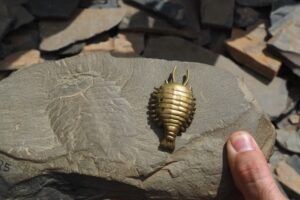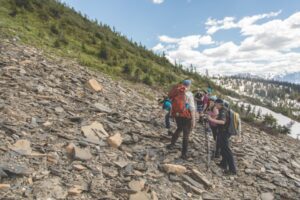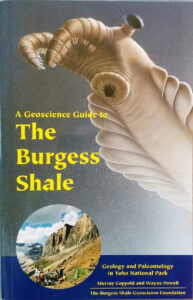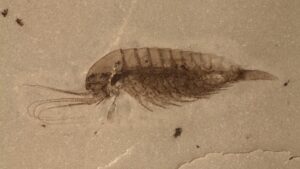What's New?

The Cambrian Explosion and the Burgess Shale
Cambrian Explosion The early Cambrian period marks one of the most spectacular evolutionary events in the history of life – The Cambrian Explosion. This was an explosion of life. Within ten million years, a very short period geologically, a host of hard-body and soft-body animals appeared in the fossil record. Trilobites,

The Geology of the Burgess Shale (Part 3): The Cathedral Escarpment
A spectacular submarine cliff over 100 metres high – the Cathedral Escarpment- marked the front of the algal limestones of the Cathedral Formation. The Cathedral Escarpment was initially thought to be a product of prolific algal growth and sediment accumulation during a period of sea level rise. A re-interpretation suggested

Burgess Shale Books: Where can I find more information on the Burgess Shale?
If you are booked to come on one of our hikes or are just interested in the Burgess Shale, here are some great Burgess Shale books to help you learn more. A Geoscience Guide to the Burgess Shale – This easy-to-read illustrated guide immerses the reader in the history, geology,

The Geology of the Burgess Shale (Part 2): What Rocks Tell Us About Life
The picture above features fossil ridge, situated behind and to the right of the hikers; as well as, Mt Wapta, situated behind and slightly to the left of the hikers. The former is where the Walcott Quarry is located. Below we describe why fossil ridge and Mount Wapta have mudstone (shale)

Qingjiang biota: A Burgess Shale type deposit in China
The Qingjiang biota, a newly discovered fossil site in China, is a treasure trove for paleontologists studying the Cambrian explosion, when life on Earth suddenly and massively expanded in diversity about 500 million years ago. More than 2,000 specimens were found at the 518 million-year-old site, and half of those specimens

The Geology of the Burgess Shale (Part 1): The Gog Group
The Gog Group underlies the Cambrian rocks where the Burgess Shale fossils are found. Those of you not wearing a bathing suit and a life preserver would be ill prepared if you somehow found yourself in Yoho National Park in the Cambrian. Beginning in the Early Cambrian (~541 million years
